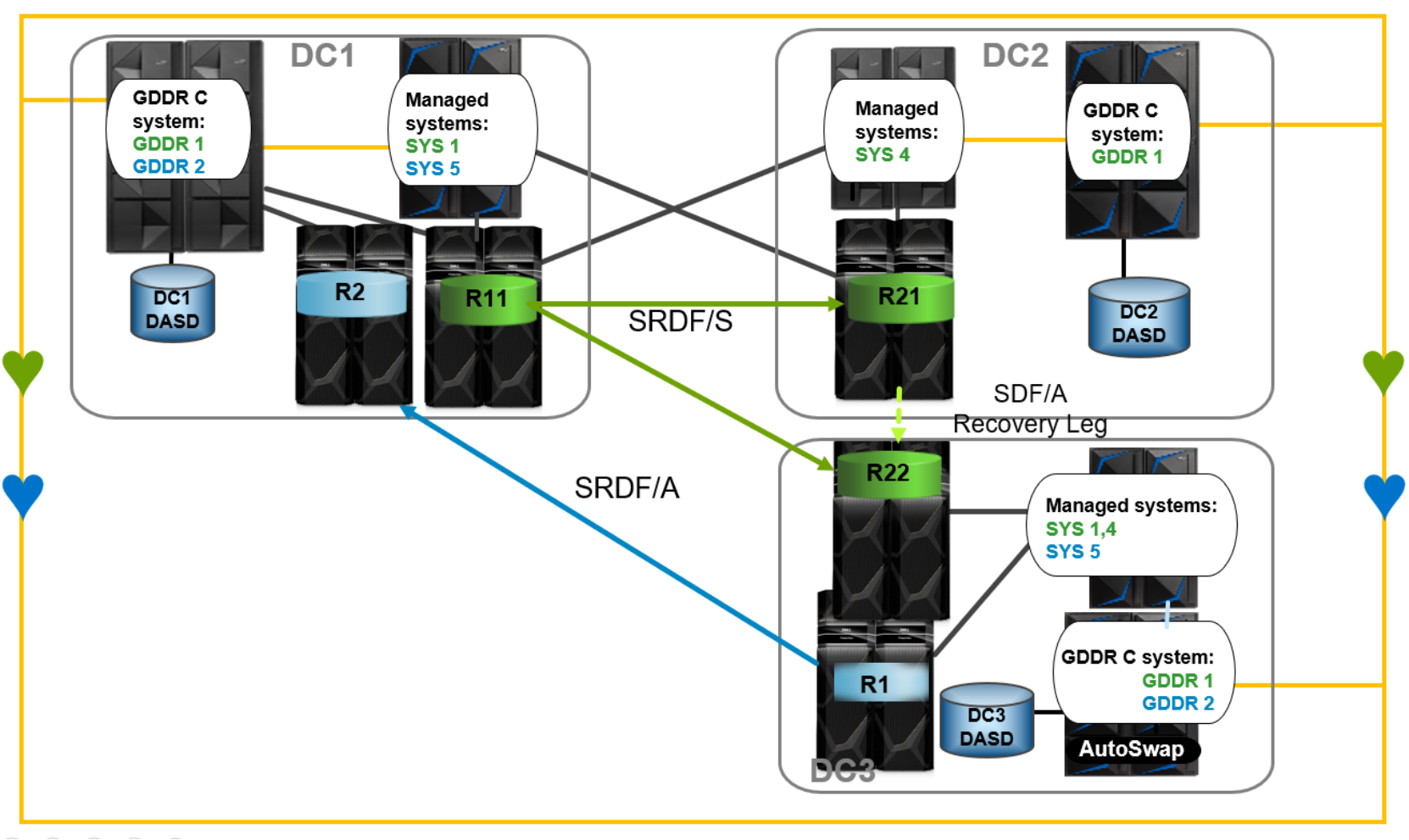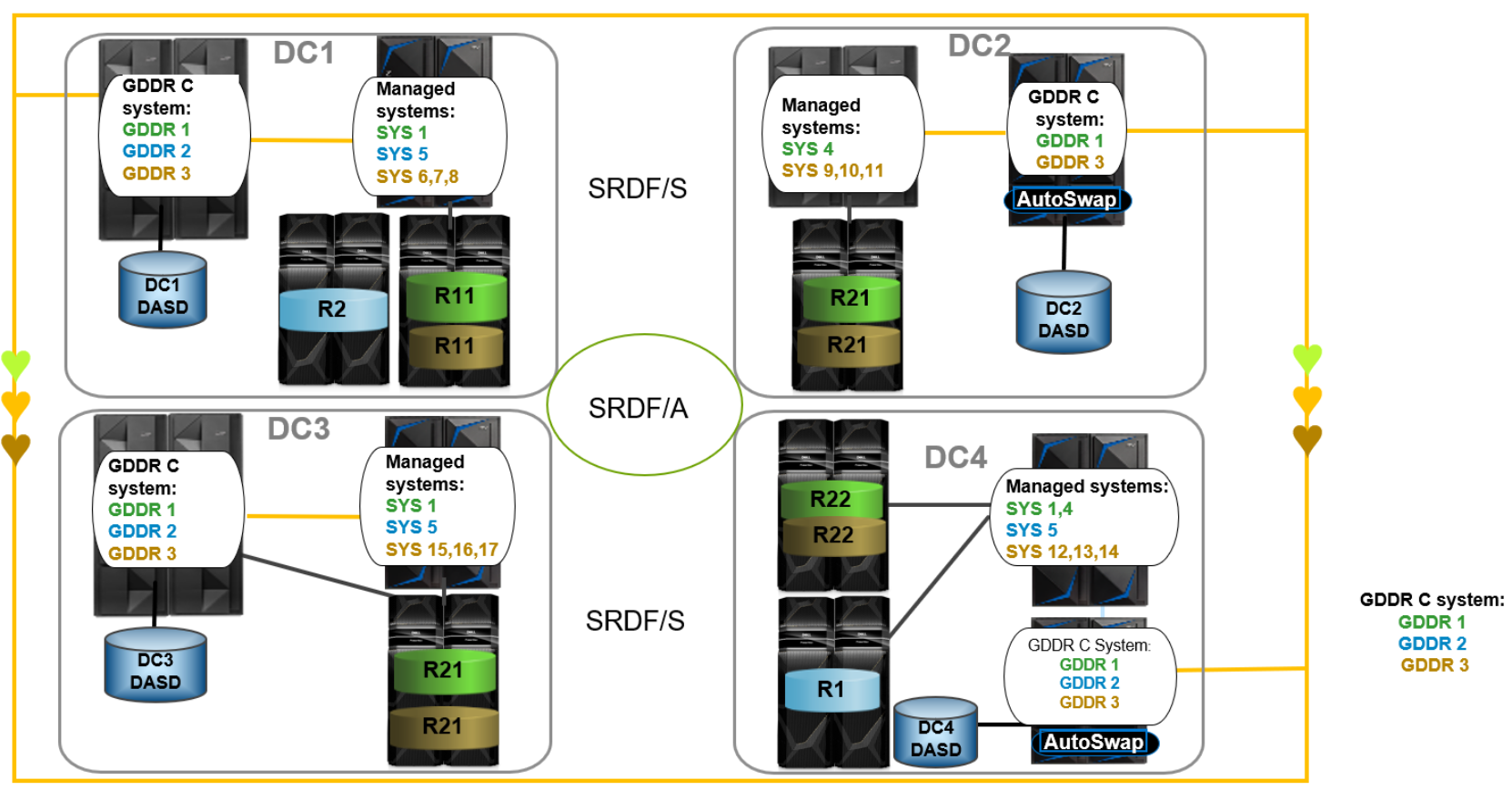Home > Storage > PowerMax and VMAX > Data Protection > Dell Technologies Geographically Dispersed Disaster Restart (GDDR) for PowerMax > GDDR Multi-Tenancy support
GDDR Multi-Tenancy support
-
GDDR is unique in its ability to support multiple instances of its control system within a single z/OS LPAR. While other business continuance automation solutions suffer from z/OS control system LPAR ‘sprawl’, requiring a dedicated z/OS LPAR per sysplex to act as a control system, GDDR can support up to eight C-Systems (called C-instances) within a single z/OS LPAR. This ‘multi-tenancy’ capability dramatically reduces the z/OS LPAR count when deploying multiple instances of GDDR in an environment.
In Figure 8, a three site Star with AutoSwap topology and a two site SRDF/A topology are deployed in a single C-system LPAR per site, with two of the GDDR C-system LPARs supporting two GDDR C-instances, one for each of the two deployed GDDR solutions (GDDR 1 and GDDR 2). This results in a 40% reduction in the number of z/OS LPARs required by GDDR (from 5 to 3).
Figure 8. Three Site SRDF/STAR with AutoSwap + 2 site SRDF/A
In Figure 9, a three site Star with AutoSwap topology, a two site SRDF/A topology, and a four site SQAR topology are deployed in a single C-system LPAR per site, with the GDDR C-system LPARs supporting multiple GDDR C-instances, one for each of the deployed GDDR solutions (GDDR 1, GDDR 2, and GDDR 3). This results in a 63% reduction in the number of z/OS LPARs required by GDDR (from 11 to 4).
Figure 9. Three site Star with AutoSwap, 2 site SRDF/A, and 4 site SQAR


